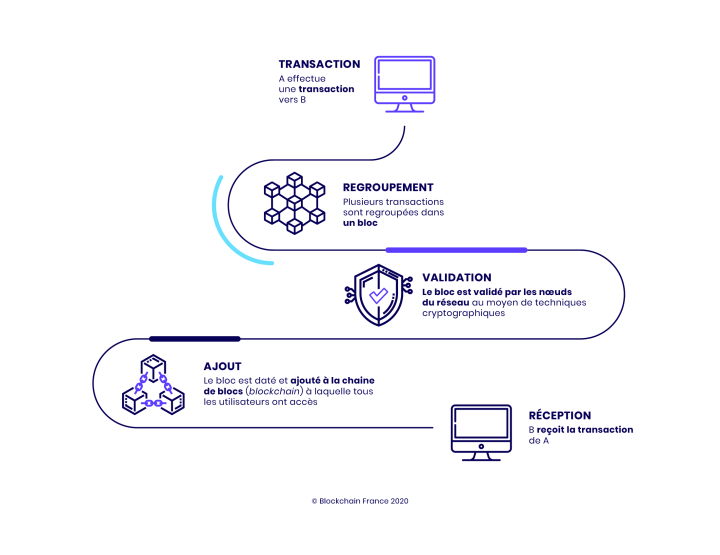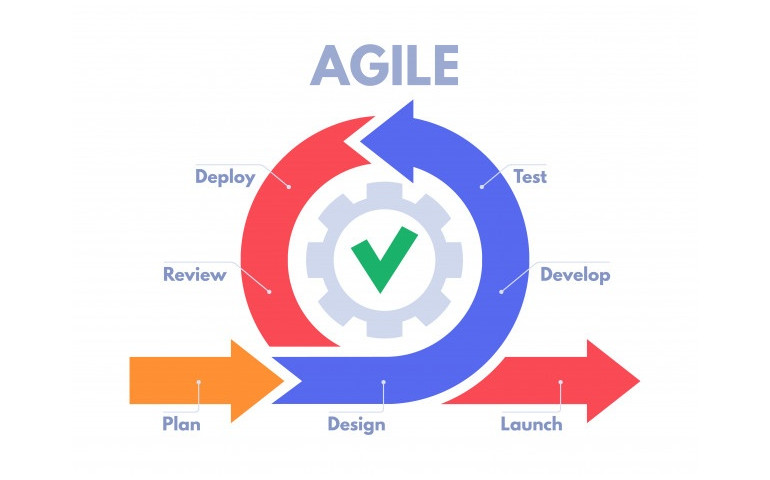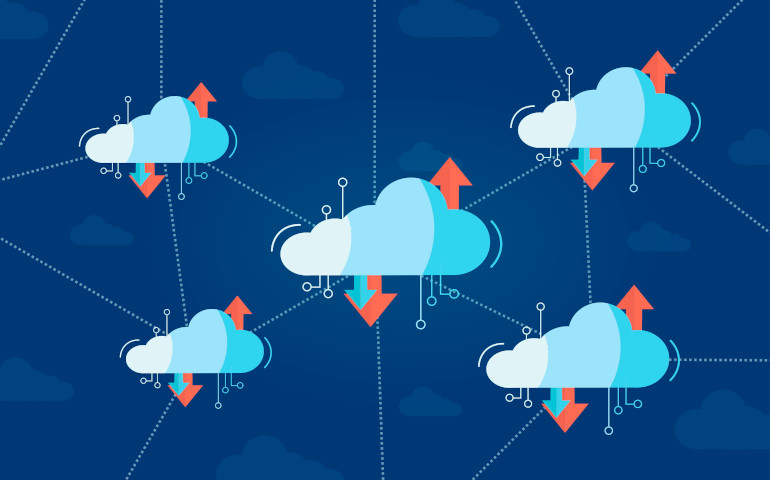Definition
Developed from 2008, blockchain is primarily a technology for storing and transmitting information. This technology offers high standards of transparency and security because it works without a central control body.
More concretely, the blockchain allows its users - connected in a network - to share data without an intermediary.
How it works ?
In practice, a blockchain is a database that contains the history of all exchanges made between its users since its creation. The Banque de France explains its main characteristics:
- the identification of each part is carried out by a cryptographic process
- the transaction is sent to a network (or storage "node") of computers located around the world
- each "node" hosts a copy of the database in which the history of the transactions carried out is recorded. All stakeholders can access it simultaneously
- the security system is based on a consensus mechanism of all the “nodes” each time information is added. Data is decrypted and authenticated by “data centers” or “miners”. The transaction thus validated is added to the database in the form of a block of encrypted data (this is the “block” in blockchain)
- decentralized security management prevents transaction forgery. Each new block added to the blockchain is linked to the previous one and a copy is transmitted to all the “nodes” of the network. The integration is chronological, indelible and tamper-proof
What advantages?
Using blockchain has many benefits, including:
- the speed of transactions thanks to the fact that the validation of a block takes only a few seconds to a few minutes
- system security , which is ensured by the fact that the validation is carried out by a set of different users, who do not know each other. This protects against the risk of malicious intent or hijacking, since the nodes monitor the system and check each other
- the productivity and efficiency gains generated by the fact that the blockchain entrusts the organization of exchanges to a computer protocol, which mechanically reduces the transaction or centralization costs existing in traditional systems (financial costs, control costs or certification, use of intermediaries who are remunerated for their service; automation of certain services, etc.).
What apps?
The blockchain represents a major innovation that is used in particular in the banking sector. Indeed, historically, blockchain technology was developed to support transactions carried out via cryptocurrencies/crypto-assets (including bitcoins which are the best known form) and which have the main characteristic of not depending on an organization. centralizer (like a central bank) and to be international.
But its use is not limited to cryptocurrencies. Many fields and sectors of activity, commercial or non-commercial, public or private, already use the blockchain or plan to do so in the years to come. The report of the joint information mission of the National Assembly on the uses of blockchains and other registry certification technologies, details some of the fields of use of the blockchain:
- in the banking sector , technology opens up the possibility of validating transactions without the intermediary of a clearing house, which should make it possible to certify transactions in much shorter timeframes; the blockchain can also promote the sharing of information between competing players in a financial center while respecting the secrecy of their commercial data and, in doing so, facilitate the management of common structures or instruments by reducing contact costs and administration fees
- in the insurance sector , the contribution of the blockchain is due, for example, to the automation of reimbursement procedures and the reduction of certain formalities at the expense of companies and their customers, provided that the assumptions and the conditions of compensation and damage are clearly established
- in the logistics sector , the blockchain has two interests: ensuring product traceability, as well as the memory of the various interventions on a production and distribution chain; reduce formalities and create the conditions for cooperation between actors in a sector, particularly in terms of information exchange; this use could also find an application in the agri-food sector for food traceability, particularly interesting in the event of a health crisis
- in the energy sector , by authorizing the exchange of services and values outside of a central management body, the blockchain potentially creates the conditions for the establishment – on a more or less large scale depending on the technical capacities – of local energy production, exchange and resale networks to balance supply and demand at all times, which is a strong constraint for electricity networks in particular
But many sectors are potentially affected by the use of blockchain technology: health, real estate, luxury, aeronautics , etc.
Summary :
- it is a technology for storing and transmitting information, taking the form of a database
- which has the particularity of being shared simultaneously with all its users and which does not depend on any central body
- has the advantage of being fast and secure
- and whose scope is much broader than that of cryptocurrencies/crypto-assets (insurance, logistics, energy, industry, health, etc.).





